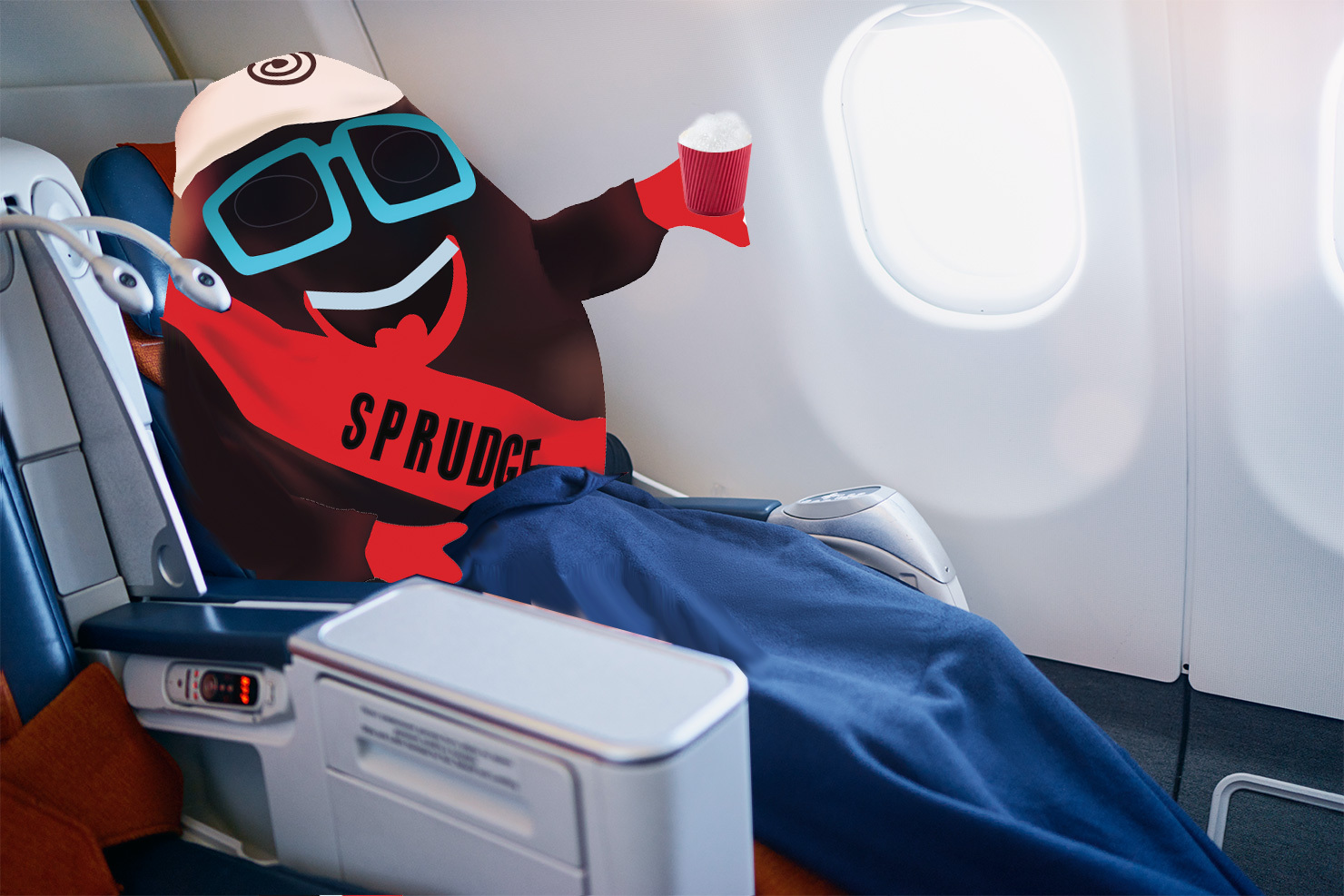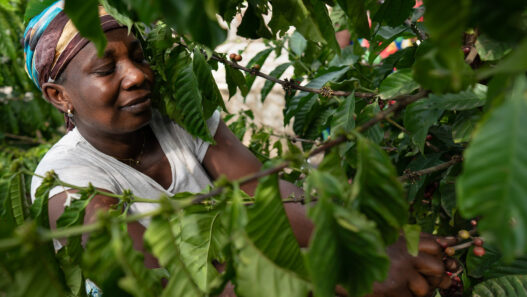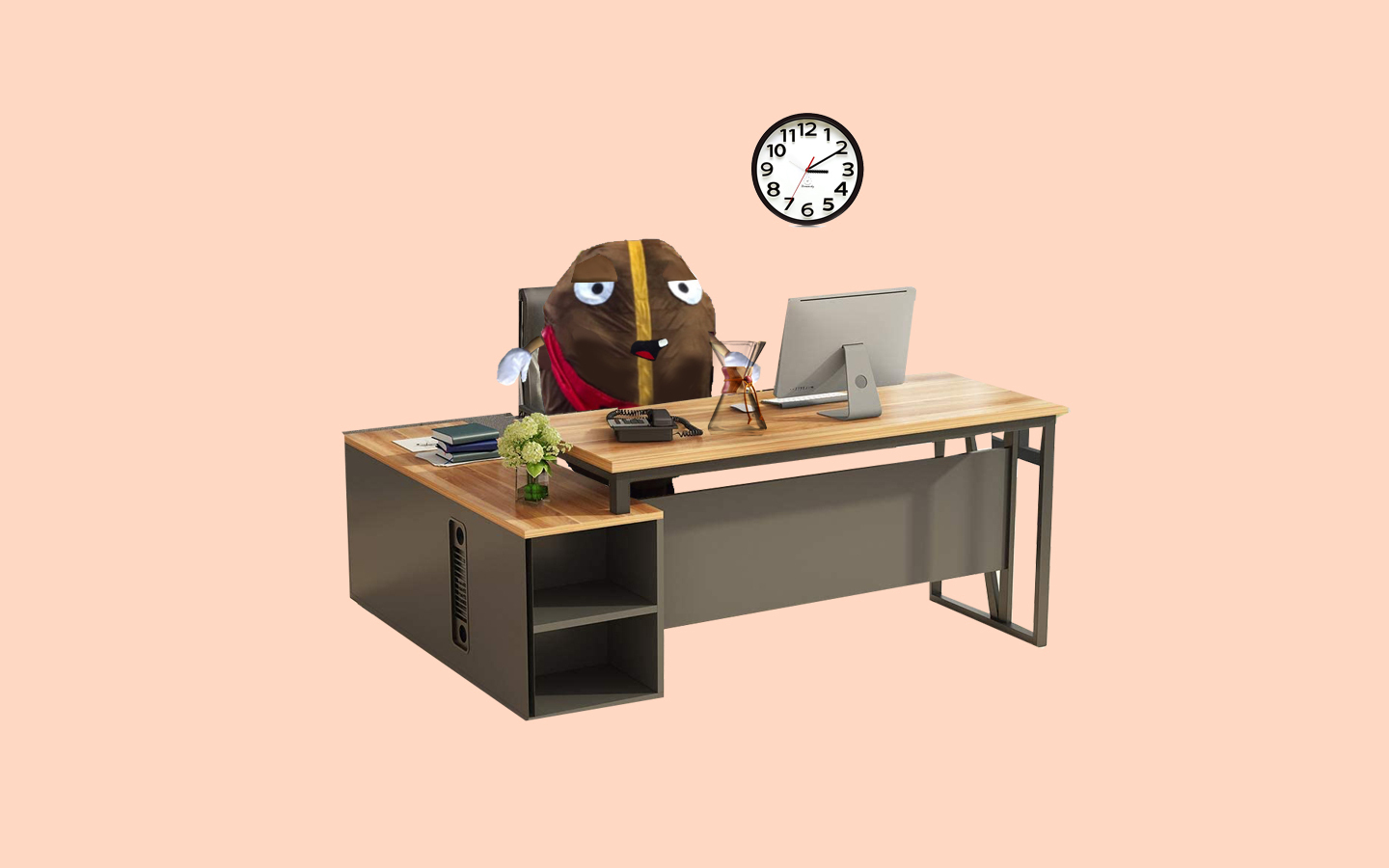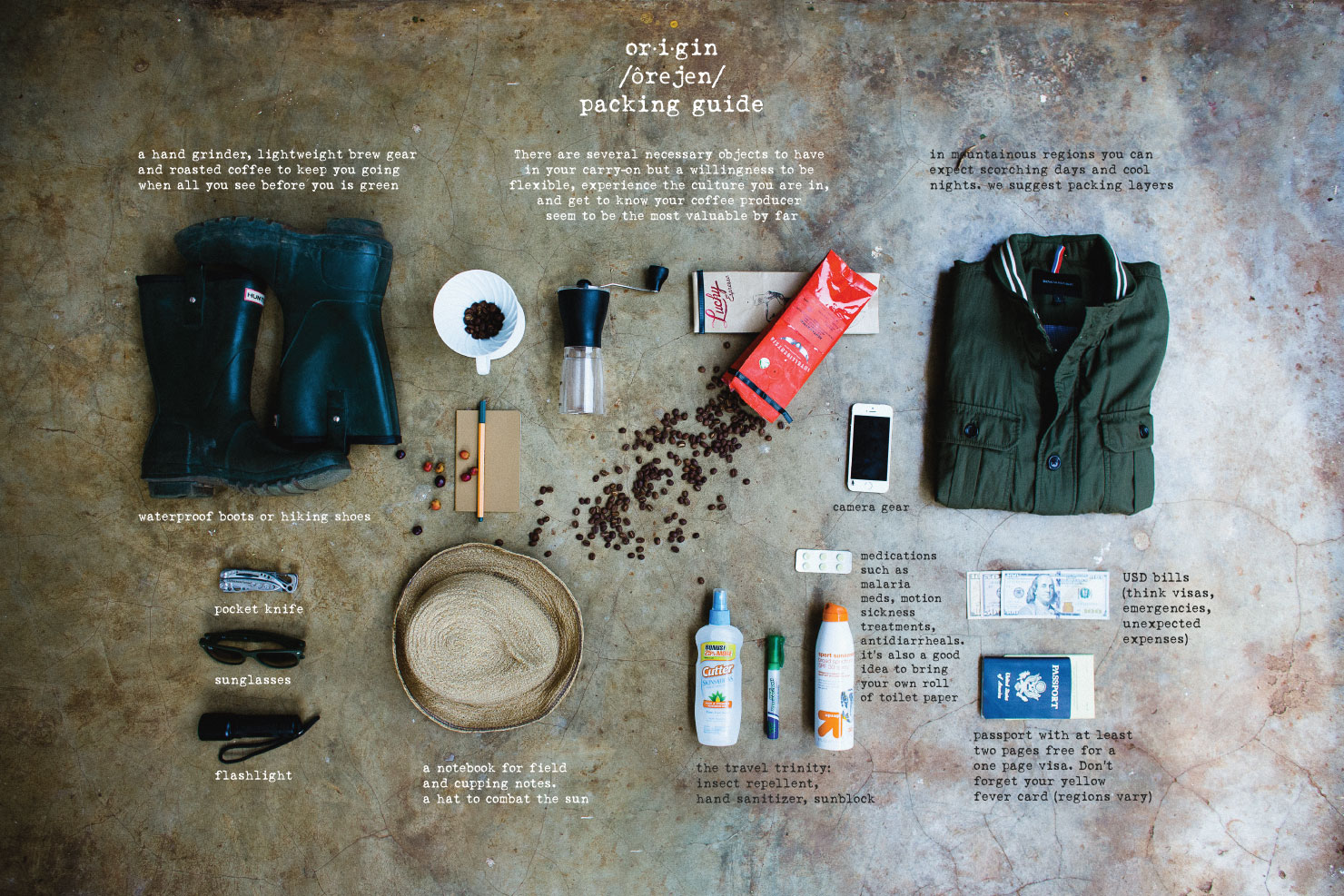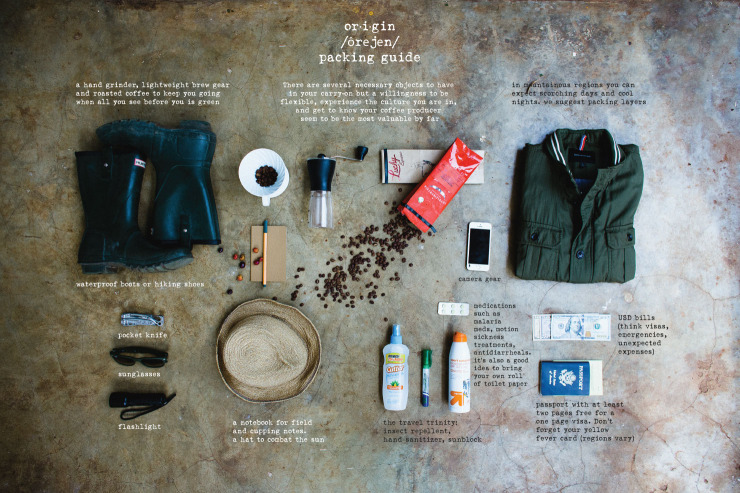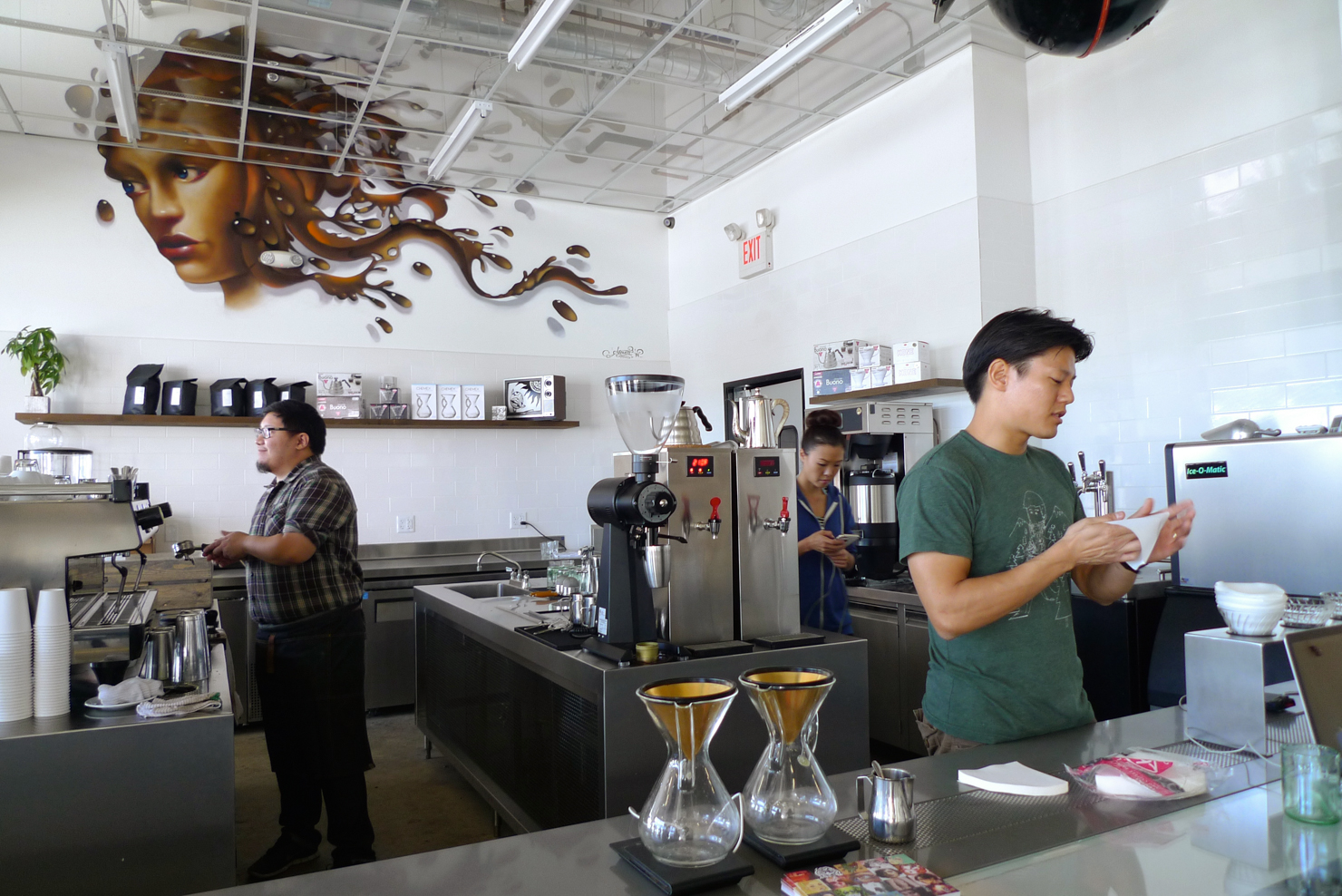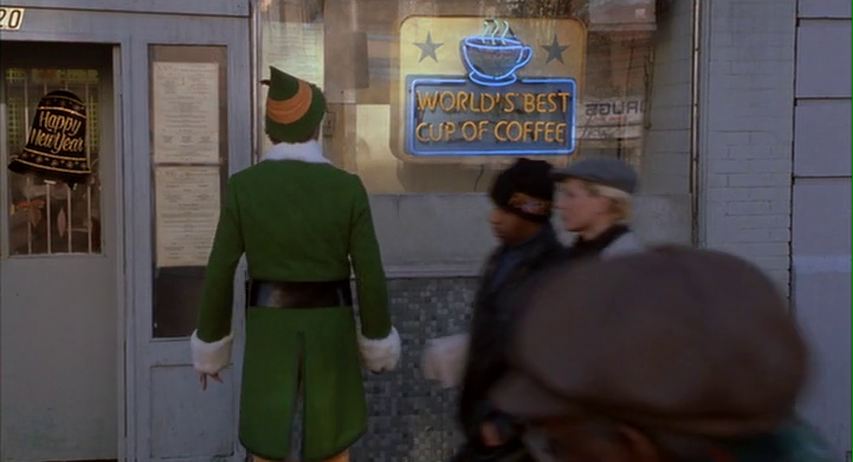For any serious coffee appreciator, traveling to an origin country and getting to see coffee being grown can be both an exciting and daunting prospect. I have discovered that visiting a coffee origin is more about what you bring with you in your soul than your suitcase. Here are some suggestions for making the most out of your trip to origin.
No two origins are alike.
If you are visiting South America your experience will be vastly different than if you are visiting Africa, and within these continents no two origins are alike. Be prepared to experience something new in every place, even if you’ve been traveling to coffee producing countries for years and years. Keep an open mind and bring your own stash of coffee, some to give away to people you meet along the way and some to keep yourself going. You might think that origin is a place where the roasted coffee flows freely, but origin is more about the green than any other color.
Get uncomfortable.
Get comfortable with being uncomfortable. Poverty, language barriers, and lack of infrastructure are some of the things you will most likely experience first hand. There might be unstable power and water, food you never expected to eat, and weather you couldn’t anticipate. I swear by what I call the trinity of travel; insect repellent, hand sanitizer, and sun block. Add in a few small snacks, a flashlight and a battery phone charger and you are ready to weather it all. Because air travel is never predictable, it’s advisable to pack in a carry-on instead of bringing a checked bag. You don’t want to arrive on a three-day trip only to have your luggage lost and not catch up to you by the time you leave.
Be flexible.
The coffee producers you are visiting are problem solvers. They have to figure out how to de-pulp their coffee with a temperamental generator, know what to do if the water tanks aren’t full enough, how to handle a coffee collection truck that has broken down. During harvest time, they will most likely be consumed with the challenges of production. If you are visiting during harvest, I would suggest coming with a willingness to flex your schedule to the unpredictability of coffee harvest. After all, visiting a coffee origin really is about building relationships and sharing ideas. When a green buyer from Melbourne came to visit us last harvest season, he ended up driving along bumpy dirt roads in the dead of night during a storm in order to help us rescue five stranded coffee farmers and their 300 kilograms of coffee cherries. These farmers had been pushing their coffee on bikes through a foot of mud for 2 hours in the dark in order to get to our station. Harvest really is an unpredictable beast.
Be prepared.
I spoke with a green buyer to ask them what they can’t live without on their trips to origin. Here’s their list of “must haves”:
- A towel for sleeping on, doused in bed bug pesticide, for bed bugs
- A roll of toilet paper
- Lots of anti-diarrhea meds
- DEET wipes that can be spread over clothing items
- Candied ginger for motion sickness
As a family we use SeaBands for motion sickness and charcoal as an anti-diarrheal. If you usually don’t suffer from motion sickness, it is still a good idea to be prepared. Traveling from the city you land in to the mountainous region where coffee grows can be a long and winding trip with lots of ups and downs and side-to-sides.
Above all, beyond these several necessary objects to have in your carry-on, there’s one even more important thing to bring. The most important thing you’ll carry is your willingness to be flexible, experience the culture you are in, and get to know your coffee producer. Without that, you may as well leave the rest at home.
Kristy Carlson is the co-founder of Long Miles Coffee Project in Burundi. This is her first feature for Sprudge.com.



